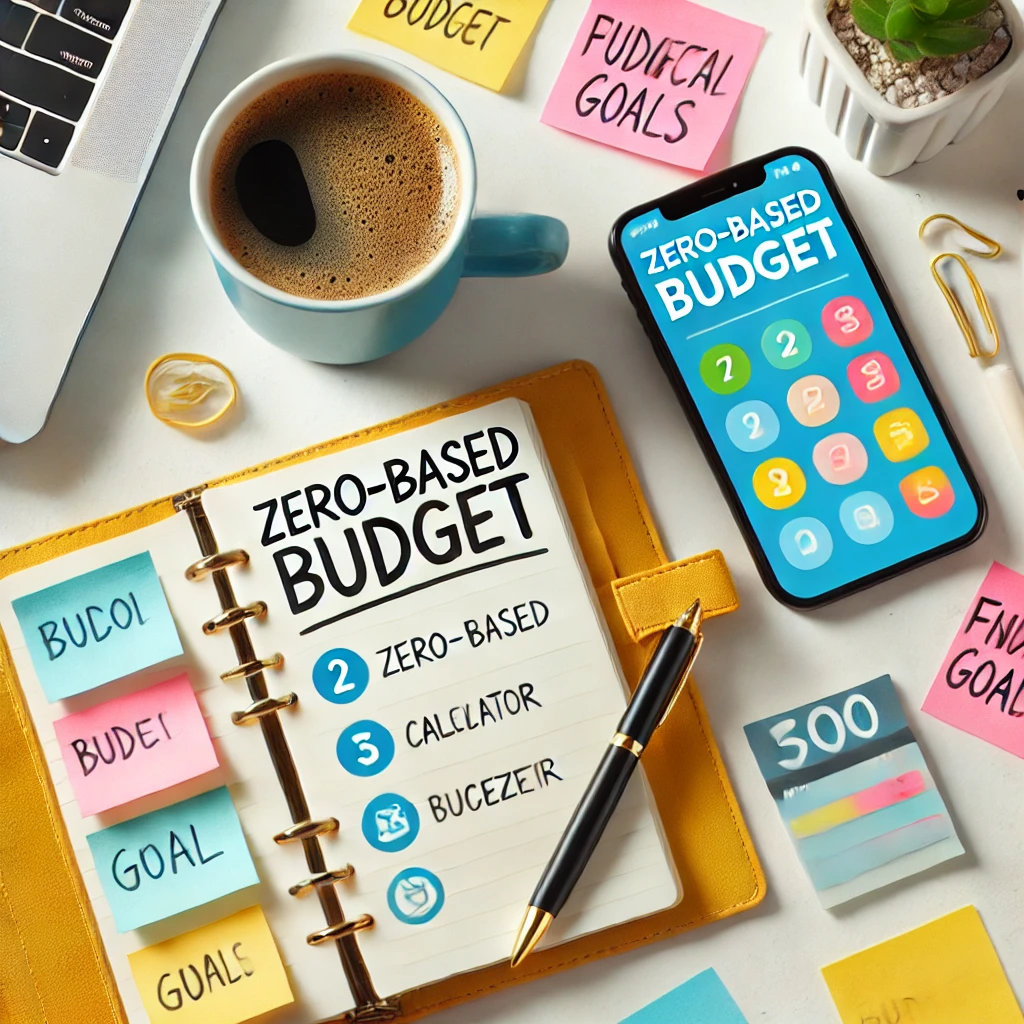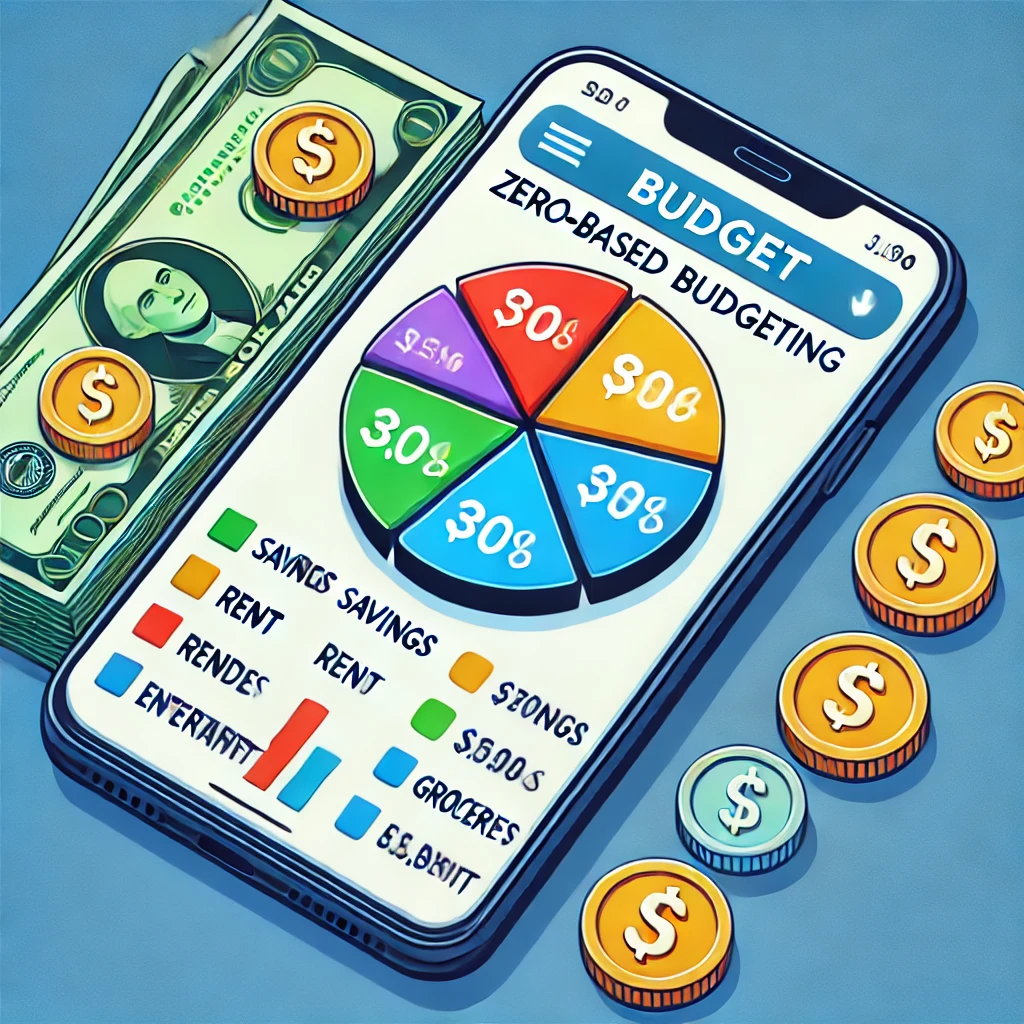The Ultimate Guide to Zero-Based Budgeting for Beginners

When it comes to managing your finances, there’s a lot of advice out there—some of it useful, some of it overwhelming. If you’ve been struggling to gain control of your money, zero-based budgeting might just be the game-changer you need. It’s not a trendy gimmick or a fleeting financial hack; it’s a straightforward, effective approach to budgeting that can help you maximize every dollar you earn.
So, grab a cup of coffee, take a deep breath, and let’s break down what zero-based budgeting is, why it works, and how you can start today—even if you’re a total beginner.
What Is Zero-Based Budgeting?
Zero-based budgeting is a method where every dollar you earn is assigned a job. That means at the end of each month, your income minus your expenses equals zero. This doesn’t mean you spend all your money—it means you give every dollar a purpose, whether it’s paying bills, saving, investing, or having fun.
The beauty of zero-based budgeting lies in its intentionality. Instead of wondering where your money went, you decide in advance where it will go. Whether you’re saving for a vacation, paying down debt, or just trying to keep the lights on, this method ensures that your spending aligns with your goals.
Why Choose Zero-Based Budgeting?
There are plenty of budgeting methods out there, so why go for zero-based budgeting? Let’s break it down:
- Clarity and Control
Zero-based budgeting forces you to look at every dollar and decide how to use it. This kind of intentional planning can give you more control over your finances than vague "save more, spend less" goals. - Prioritization
This method helps you focus on what matters most. Do you want to build an emergency fund, pay off high-interest debt, or save for a down payment on a house? With zero-based budgeting, your goals take center stage. - Flexibility
Life happens, and budgets need to adapt. Zero-based budgeting allows for that. If you overspend in one category, you adjust by pulling funds from another—no guilt, just balance. - Financial Awareness
Tracking every dollar creates a deeper awareness of your financial habits. You’ll quickly notice areas of wasteful spending, giving you the opportunity to cut back and reallocate funds to what truly matters.
To dive deeper into financial resilience and aligning your spending with your goals, check out our article on Financial Wellness Tips: Income and Expense Management.
How to Start Zero-Based Budgeting
Ready to give it a try? Here’s a step-by-step guide to get you started.
Step 1: Calculate Your Income
Start by determining how much money you bring in each month. Include all sources of income: your salary, side hustle earnings, rental income, or any other streams.
Step 2: List Your Expenses
Write down every expense you have. This includes fixed costs like rent or mortgage, utilities, and insurance, as well as variable costs like groceries, dining out, and entertainment. Don’t forget irregular expenses such as annual subscriptions or holiday gifts.
For tips on cutting down expenses, explore our guide on Money-Saving Shopping Strategies.
Step 3: Assign Every Dollar a Job
This is where zero-based budgeting shines. Allocate your income across all your expense categories until every dollar is accounted for. For example:
- Rent: $1,200
- Groceries: $400
- Savings: $300
- Debt Repayment: $200
- Entertainment: $100
Step 4: Adjust and Adapt
Once your month begins, track your spending to ensure you stick to your budget. If you overspend in one category, adjust by reallocating funds from another.
Step 5: Review Monthly
At the end of each month, evaluate how well your budget worked. Did you meet your goals? Were there unexpected expenses? Use this information to refine next month’s budget.
Common Mistakes to Avoid
- Forgetting Irregular Expenses
If you overlook irregular expenses like annual car registration or holiday gifts, you’ll end up scrambling. Plan ahead and save a little each month for these costs. - Not Tracking Spending
Zero-based budgeting only works if you track your spending consistently. Use apps, spreadsheets, or even pen and paper—whatever keeps you accountable. - Being Too Rigid
Life is unpredictable. If something unexpected happens, adjust your budget. Flexibility is key to staying on track without feeling discouraged.
For more strategies on balancing your budget and handling surprises, visit Financial Planning for Uncertain Times.
Tips for Success
Automate Where You Can
Set up automatic transfers to savings or debt payments to ensure you stay on track with your goals.
Use a Budgeting App
Apps like YNAB (You Need A Budget) or EveryDollar are specifically designed for zero-based budgeting. They make it easier to track expenses and adjust as needed.
Celebrate Small Wins
Whether it’s paying off a credit card or saving $100 more than last month, celebrate your progress. It keeps you motivated to stick with the system.
Make It a Habit
Budgeting isn’t a one-and-done activity. Regularly review your budget and adjust it based on changing circumstances. Over time, it’ll become second nature.

How Zero-Based Budgeting Aligns with Financial Wellness
Zero-based budgeting isn’t just about numbers—it’s about aligning your financial habits with your life goals. By prioritizing your spending, you can reduce stress and gain clarity.
For instance, if your goal is to improve your health, a zero-based budget can help you set aside funds for gym memberships, healthier groceries, or stress-relieving activities. Explore the connection between finances and well-being in our article Health and Financial Wellness: Tips for Balance.
Real-Life Example
Let’s look at how Sarah, a young professional, used zero-based budgeting to pay off her credit card debt.
Sarah’s Situation:
- Income: $3,500 per month
- Expenses:
- Rent: $1,200
- Utilities: $150
- Groceries: $400
- Transportation: $200
- Credit Card Payments: $500
- Savings: $300
- Fun Money: $150
- Miscellaneous: $100
Sarah assigned every dollar a job, focusing on her priority: eliminating debt. By sticking to her budget, she paid off her $5,000 credit card balance in 10 months and then shifted her focus to saving for an emergency fund.
Zero-Based Budgeting and Frugality
Zero-based budgeting naturally complements a frugal lifestyle. By focusing on what you truly value, you eliminate wasteful spending and maximize your resources.
If you’re interested in embracing frugality alongside zero-based budgeting, check out Practical Guide to Frugality and Minimalism.
Additional Tools to Enhance Your Zero-Based Budget
Budgeting Templates
Using templates can simplify the process. Many websites offer free, downloadable zero-based budget spreadsheets that guide you through income and expense allocation.
Envelopes System
For those who prefer cash, the envelope system works well with zero-based budgeting. Assign physical cash to labeled envelopes for each spending category to ensure you don’t overspend.
Financial Coaching
Sometimes, an app or spreadsheet isn’t enough. If you’re struggling to stick to your budget, consider consulting a financial coach for personalized advice.
Zero-based budgeting is an empowering way to take control of your finances. It forces you to plan, prioritize, and adjust, ensuring that your money works as hard as you do. Whether you’re just starting your financial journey or looking to fine-tune your habits, this method can help you reach your goals faster.
Ready to take the first step? Start small, track your progress, and don’t be afraid to tweak as you go. With zero-based budgeting, you’re not just making a budget—you’re building a roadmap to financial freedom.
For more tips and strategies on budgeting and financial management, visit Top Financial Tools & Apps. Let’s make every dollar count!
